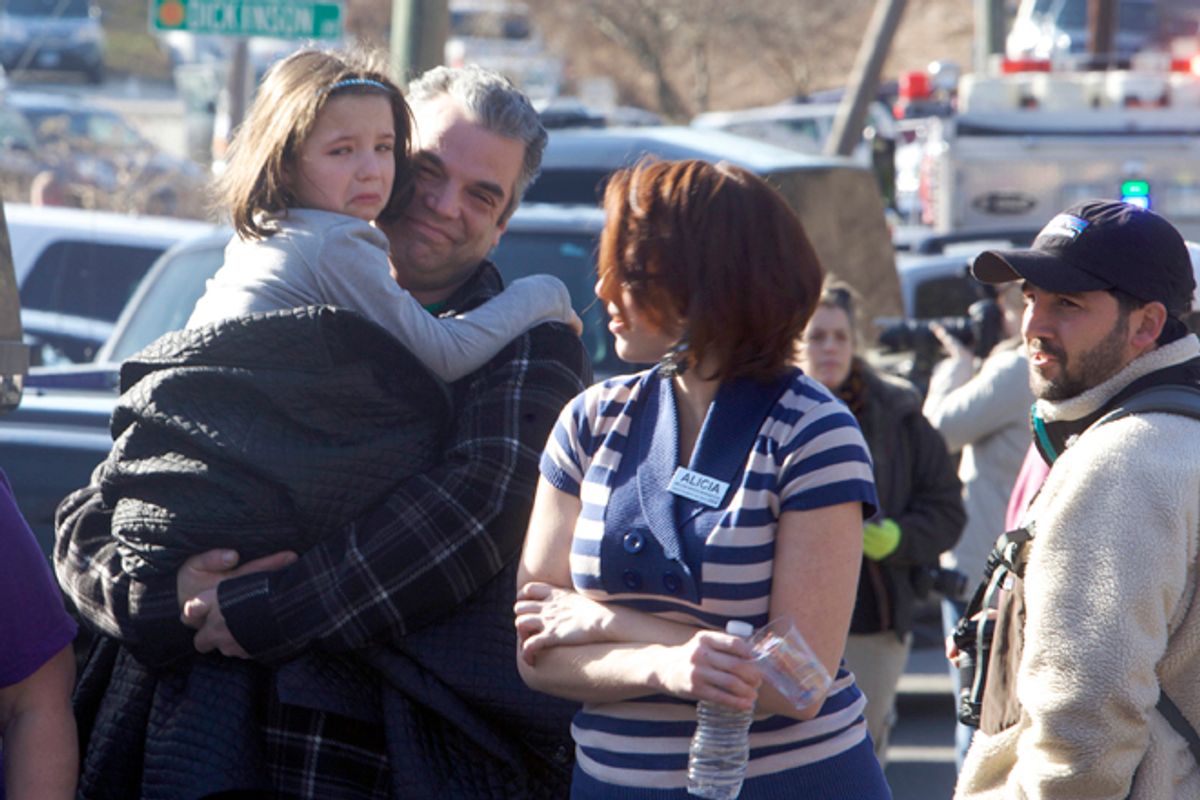 Much has been written in the wake of the Newtown tragedy about the connection between the culture of masculinity and the culture of gun violence. In the past 30 years, all but one of the past 62 mass murderers in the country who have used guns have been men. Gun makers equate gun ownership with manliness. The speculation as to why is rampant. Men are dangerously threatened due to the rise of minorities and women. Men are more sensitive to slights than women. Growing up to be a man is hard.
Much has been written in the wake of the Newtown tragedy about the connection between the culture of masculinity and the culture of gun violence. In the past 30 years, all but one of the past 62 mass murderers in the country who have used guns have been men. Gun makers equate gun ownership with manliness. The speculation as to why is rampant. Men are dangerously threatened due to the rise of minorities and women. Men are more sensitive to slights than women. Growing up to be a man is hard.
It’s important to consider the gendered context under which these shooting crimes are committed, and particularly how many of these murderers choose their victims. The rubric of gun culture, mental health and mass violence has myriad elements, and much of it is tied to what it is to be a man in America.
But we lose a critical part of our understanding, and therefore a critical part of any solution, when the conversation is built solely on a platform of masculinity. And I say this because I have only been personally touched by one mass shooting in my life, and it was done by a woman.
On May 20, 1988, Laurie Dann walked into Hubbard Woods Elementary in Winnetka, Ill., and shot six children. One of them, Nicholas Corwin, died. He was 8 years old. In the past few days, his mother has been interviewed. It is a wound that never heals, not for his family or for the other children who were at the school. Though I wasn’t a student there, my family lived in Glencoe, a neighboring suburb, when the shooting occurred. I was in the same grade as Nick Corwin, and as a kid acutely felt the reign of terror and anxiety that shook the cloistered north suburbs Chicago. It does every time a school shooting occurs. High school friends say they have been freshly traumatized by the Newtown shooting. Many, nearly 25 years later, can remember every detail from that day, down to what they ate and which parents were in the classroom. Some still suffer from regular nightmares.
Dann’s family was from Glencoe, perhaps a 10-minute drive from Hubbard Woods Elementary, and she went to the same high school I eventually graduated from. She was living with her parents in Glencoe when she murdered Corwin. In a close-knit community, many knew she was disturbed, as did her family — after years of erratic and paranoid behavior and a messy divorce, during which she legally acquired a gun, they put her in intensive therapy in a community in Madison, Wis. Her family unsuccessfully attempted to commit her, but eventually she moved back into her parents home after sending death threats to her ex-husband, former baby-sitting clients, former friends and her psychiatrist. Not long after she became a murderer.
Before she began her shooting spree, Dann mailed arsenic-laced food to numerous contacts. She then drove to another nearby school, Ravinia Elementary in Highland Park, and set a small fire, because she believed her ex-sister-in-law’s children were in school there. She attempted to set fire to a day care in the community, but was thwarted. Eventually, she made her way to Hubbard Woods, shooting four boys and two girls, injuring five of them but murdering Corwin. She escaped and took a local family hostage in their home, shooting their college-age son before killing herself in their home.
By now, this script is eerily and horribly familiar. A mentally unwell person obtains several guns. Seeks revenge against an ex-spouse and their loved ones due to perceived slights. Appears to target victims based on gender. Destroys lives and families.
Except in this script, the perpetrator is a woman. The culture of violence and domestic violence in this country is not solely about men and masculinity. Our analysis of it can’t be, either.



Shares